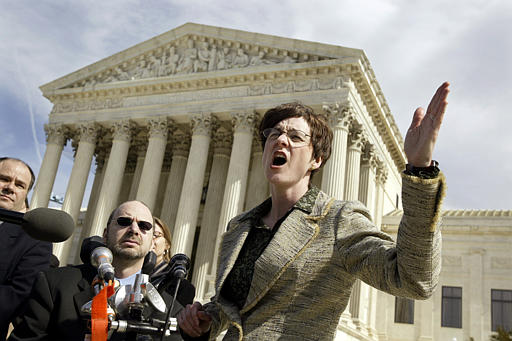The Miller Test is the primary legal test for determining whether expression constitutes obscenity. It is named after the U.S. Supreme Court’s decision in Miller v. California (1973).
Justice Burger outlined guidelines for jurors in obscenity cases
In that case, Marvin Miller mailed five unsolicited brochures to the manager of a restaurant and his mother containing explicit pictures and drawings of men and women engaged in a variety of sexual activities. Mr. Miller was prosecuted for violating a California law that made it a misdemeanor to knowingly distribute obscene material.
In his majority opinion, Chief Justice Warren Burger outlined what he called “guidelines” for jurors in obscenity cases. These guidelines are the three prongs of the Miller test. They are:
- (1) whether the average person applying contemporary community standards would find the work, taken as a whole, appeals to the prurient interest;
- (2) whether the work depicts or describes, in a patently offensive way, sexual conduct specifically defined by the applicable state law; and
- (3) whether the work, taken as a whole, lacks serious literary, artistic, political or scientific value.
Miller wanted a national obscenity standard, not local
Miller argued that there should be a national obscenity standard, not one based on local community standards. But, the majority disagreed, famously writing that “[i]t is neither realistic nor constitutionally sound to read the First Amendment as requiring that the people of Maine or Mississippi accept public depiction of conduct found tolerable in Las Vegas, or New York City.”
In Pope v. Illinois (1987), the Court held that the trier of fact should apply a national standard to the third prong.
Miller test faces challenges with online obscenity cases
In the ensuing decades, the Miller test would face its greatest challenge with online obscenity cases. In Ashcroft v. ACLU (2002), a case challenging the constitutionality of the Child Online Protection Act, several justices questioned the constitutionality of applying the local community standards of Miller to speech on the Internet.
For example, in his concurring opinion, Justice Anthony Kennedy opined that applying local community standards might lead to the substantial suppression of protected speech, writing, “A Web publisher in a community where avant garde culture is the norm may have no desire to reach a national market; he may wish only to speak to his neighbors; nevertheless if an eavesdropper in a more traditional, rural community chooses to listen in there is nothing a publisher can do.”
Federal obscenity prosecutions have waned in the last decade, but state obscenity prosecutions continue in what legal expert Jennifer Kinsley refers to as the “myth of obsolete obscenity.”
David L. Hudson, Jr. is a law professor at Belmont who publishes widely on First Amendment topics. He is the author of a 12-lecture audio course on the First Amendment entitled Freedom of Speech: Understanding the First Amendment (Now You Know Media, 2018). He also is the author of many First Amendment books, including The First Amendment: Freedom of Speech (Thomson Reuters, 2012) and Freedom of Speech: Documents Decoded (ABC-CLIO, 2017). This article was originally published in 2018.

